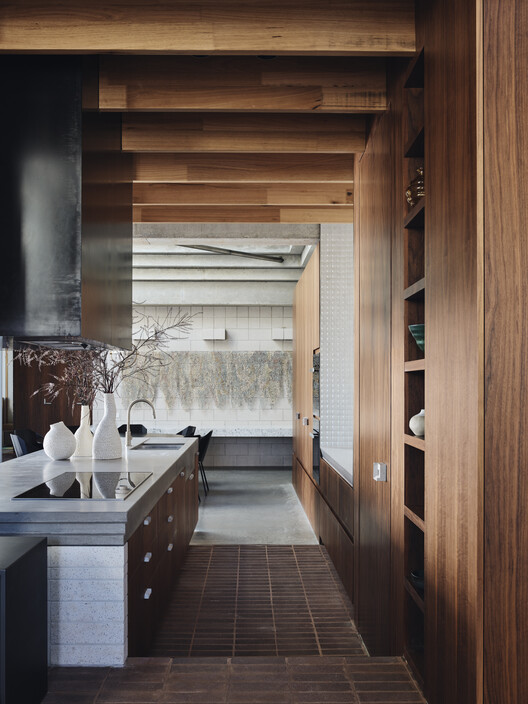
-
Architects: Albert Mo Architects
- Area: 350 m²
- Year: 2020
-
Photographs:Derek Swalwell
-
Manufacturers: Brickworks

Text description provided by the architects. A single row of mature poplar trees, along the side unsealed road, forms a soft foreground to what we considered as the "main" façade of the house. Shadows of the trees cast onto the white concrete masonry blocks in the morning, animate the long articulated façade. The articulations, through the masonry and concrete detailing, together with the frustum roofs and layering of spaces, evoke street engagements and curiosities. These pose a polemic to the long façade which is essentially a defense mechanism to provide and suggest domestic privacy.





































































